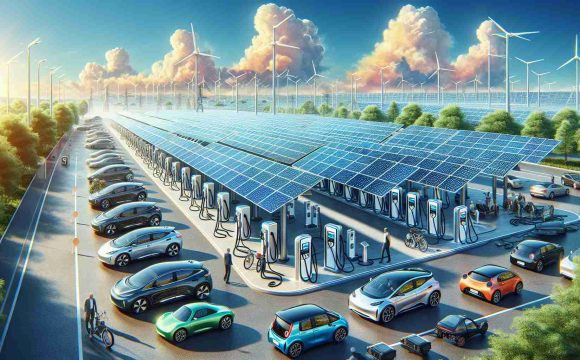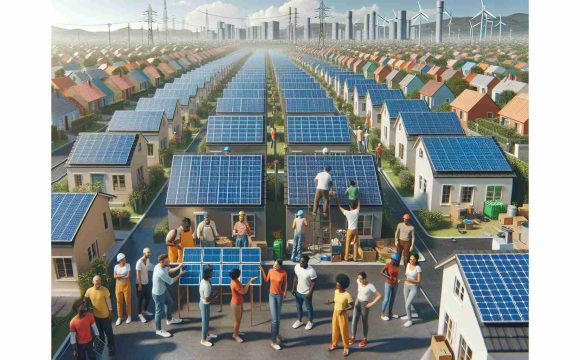Groundbreaking Advances in Solar Technology
JinkoSolar, a leading Chinese solar module manufacturer, has announced an impressive achievement in solar technology: a stunning power conversion efficiency of 33.84% for its perovskite-silicon tandem solar cell utilizing n-type wafers. This achievement marks a significant leap from their previous record of 33.24%.
This advancement has been confirmed by the Shanghai Institute of Microsystem and Information Technology, part of the prestigious Chinese Academy of Sciences (CAS). The design integrates JinkoSolar’s cutting-edge N-type high-efficiency monocrystalline TOPCon solar cell as its base, benefiting from several technological enhancements.
These innovations include full-area passivated contact technology and specialized methods for reducing interfacial and bulk defects. These advancements combine to significantly elevate the efficiency of the perovskite/TOPCon tandem cell.
Despite JinkoSolar’s success, the global record for perovskite-tandem solar cell efficiency is held by Longi, which achieved 34.6% in September 2024. In the competitive landscape of solar research, Saudi Arabia’s King Abdullah University of Science and Technology previously reported a 33.7% efficiency for a similar design.
Experts from Germany’s Fraunhofer Institute for Solar Energy Systems suggest that, with architectural changes, such as the replacement of traditional materials in the cell structure, the theoretical efficiency of these cells could reach as high as 39.5%. This paves the way for further exploration in the solar energy sector.
Unveiling the Next Era of Solar Energy: Record-Breaking Efficiency and Innovations
Groundbreaking Advances in Solar Technology
The solar energy landscape is undergoing remarkable changes, with companies like JinkoSolar leading the way in achieving unprecedented efficiency levels. Recently, JinkoSolar announced a new record in solar technology with a power conversion efficiency of 33.84% for its perovskite-silicon tandem solar cell that utilizes n-type wafers. This achievement surpasses their own previous record of 33.24%, indicating rapid progress in solar energy innovations.
Key Features of JinkoSolar’s Advances
1. N-Type Wafer Technology: The foundation of JinkoSolar’s latest achievement is its N-type high-efficiency monocrystalline TOPCon solar cell, which provides a sturdy base for the perovskite layer.
2. Innovative Enhancements: The design integrates several technological advancements, including:
– Full-area Passivated Contact Technology: This method improves how light interacts with the cell, enhancing overall performance.
– Defect Reduction Methods: Specialized techniques have been employed to minimize interfacial and bulk defects, which are critical in improving the cell’s efficiency.
Current Competition and Records
While JinkoSolar makes strides, it’s important to note that the global record for perovskite-tandem solar cell efficiency currently belongs to Longi, which achieved an impressive 34.6% efficiency in September 2024. Additionally, researchers from Saudi Arabia’s King Abdullah University of Science and Technology have reported a competitive efficiency of 33.7% for similar designs, demonstrating the fierce competition within the solar research sector.
Future Predictions and Potential
According to insights from the Fraunhofer Institute for Solar Energy Systems in Germany, architectural changes in solar cell technology could allow for theoretical efficiencies to reach as high as 39.5%. Such predictions highlight the potential within solar energy innovations, encouraging further research into material scientists’ and engineers’ creative solutions.
Pros and Cons of Perovskite-Silicon Tandem Cells
Pros:
– High Efficiency: The ability to achieve efficiencies above 33% indicates significant potential for energy generation.
– Reduced Production Costs: Advances in technology may lower the costs associated with solar cell production over time.
Cons:
– Stability Concerns: Perovskite materials can face stability and longevity issues under prolonged exposure to environmental conditions.
– Scalability: While laboratory efficiencies are promising, scaling these technologies for widespread commercial use remains a challenge.
Sustainability and Market Trends
The push toward ultra-high-efficiency solar cells aligns closely with global sustainability goals. As climate change concerns escalate, advancements in solar technology not only promise cleaner energy alternatives but also aim to make solar energy more competitive against fossil fuels. As major players continue to innovate, we can expect a significant shift in energy consumption patterns worldwide.
In conclusion, as companies like JinkoSolar and Longi vie for leadership in solar technology, the coming years may redefine the possibilities of solar energy, making it an even more viable option for global energy needs. For more insights into the latest innovations in solar technology, visit the JinkoSolar official website.






